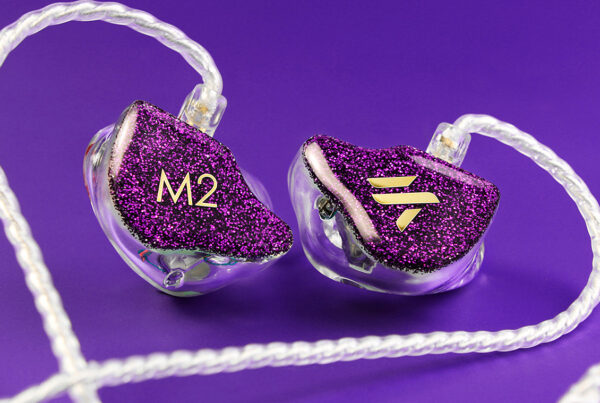
If you’ve been to a live concert in the last decade, you’ve probably seen the artists and performers wearing small earpieces while on stage. These are called in-ear monitors (IEMs)—and they’ve completely transformed how musicians and audio engineers hear themselves and others during performances.
In this post, we’ll break down what in-ear monitors are, how they work, why they’re used, and what to consider before using them.
What Are In-Ear Monitors?
Although very similar to traditional earphones, In-Ear Monitors (IEMs) are high-fidelity audio devices that were originally created to replace the use of floor wedges during a live performance. Floor wedges were necessary so that performers could hear themselves whilst on stage, but had several major drawbacks such as contributing to excessive SPL (sound pressure level) on stage, which lead to a higher chance of dreadful feedback and muddying up the mix for the audience.
The use of IEMs solved all of the issues of floor wedges, while also offering several key advantages, including personalized mixes per musician or performer, reduced chance of feedback due to a quieter stage, and consistent audio quality regardless of the venue or stage setup.
In-Ear Monitors, when paired with a wireless system, also allow the performers to freely roam the stage without any change to what they hear, allowing them to stay in tempo with the rest of the band and put on a better show.
Benefits of In-Ear Monitors
IEMs offer several advantages over traditional monitor setups:
1. Superior Sound Isolation
IEMs block out crowd and stage noise, allowing performers to hear only what matters most—whether that’s vocals, instruments, or a click track.
2. Customized Mixes
Each user can receive their own personalized mix. Singers can hear more of their voice, drummers can emphasize the beat, and so on.
3. Hearing Protection
IEMs reduce the need for loud on-stage monitors, protecting musicians from long-term hearing damage.
4. Superior Fit
Custom in-ear monitors are tailor made to match the unique contours of the users ears, resulting in superior comfort and fit.

What about driver count?
When it comes to considering driver count, the general rule of thumb is this: the greater the driver count, the greater the headroom. Increasing headroom directly contributes to a lower noise floor, greater dynamic range, improved transient response, and a higher maximum SPL.
Wether or not these things are important to you will depend on your situation and use case. If you find yourself playing at a small to medium church worship service, then a lower driver IEM should suit you just fine. A large concert with screaming fans? That extra headroom will definitely come in handy. Those who play highly dynamic and transient heavy instruments, such as drums, will also benefit from the higher driver count IEM models.
Universal vs Custom IEMs
The biggest differences between universal and custom in-ear monitors is primarily in fit, comfort, isolation, and cost. Universal IEMs are designed to fit a broad range of ears using interchangeable tips made from either foam or silicone. While they’re convenient and ready to use out of the box, the fit can vary between users, which may affect comfort and sound consistency.
Custom IEMs on the other hand, require the use of ear impressions to craft the shells that match the unique contours of the users ears. This results in a more secure and comfortable fit while providing superior noise isolation—ideal for live performers or studio professionals.
For more information regarding what goes into making a custom IEM, we outline the build process in the article “How are custom in-ear monitors made?“.
In terms of sound quality, both types can deliver excellent performance, but custom models typically offer more consistent audio due to the precise seal they create. Universal IEMs are usually more affordable and accessible, while custom options require more investment and time but deliver a tailored experience that many musicians and audiophiles consider well worth it.

Maytak Audio Custom IEMs
At Maytak Audio, we believe that in-ear monitors are a valuable musical tool and instrument, and as such, should be designed with the focus on sound quality reproduction. That is why every model in our lineup is meticulously tested and revised as needed in order to satisfy our rigorous in-house sound quality standards and our target sound signature can be described as balanced, neutral, and musical.
Check out our Custom IEM Catalog or browse our IEM offerings below:
Final thoughts
In-ear monitors have become an essential tool for performers and audio professionals alike. They offer a personalized, high-fidelity listening experience that keeps you connected to your mix while protecting your hearing.
If you’re serious about your sound—on stage or in the studio—investing in a good IEM system can be a game-changer.





